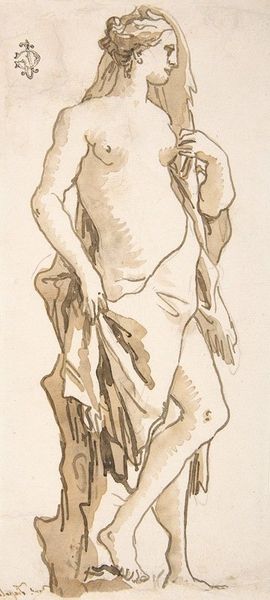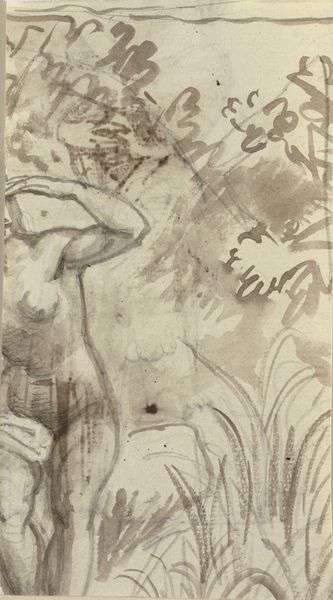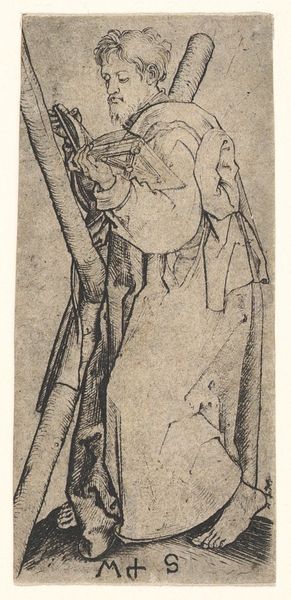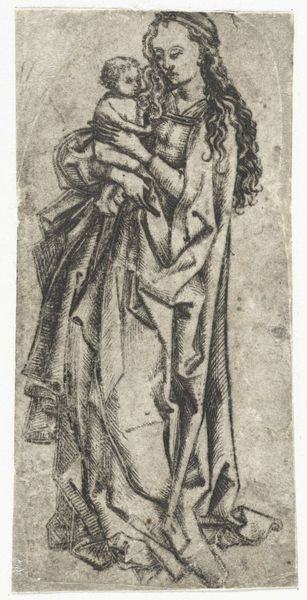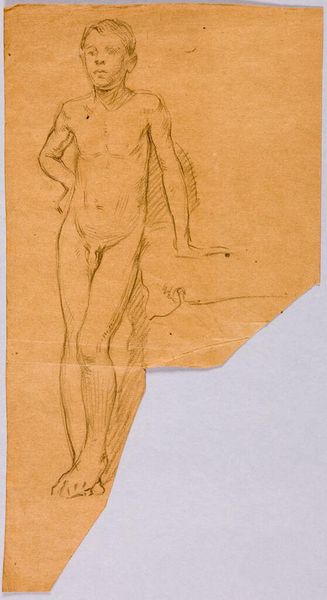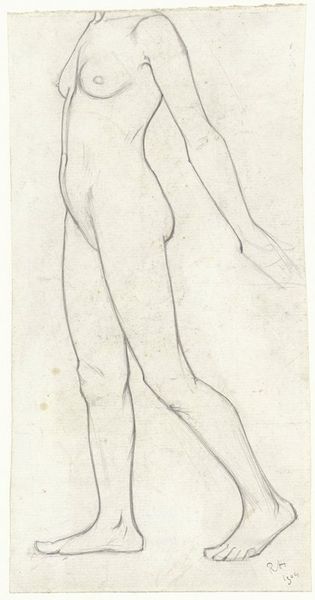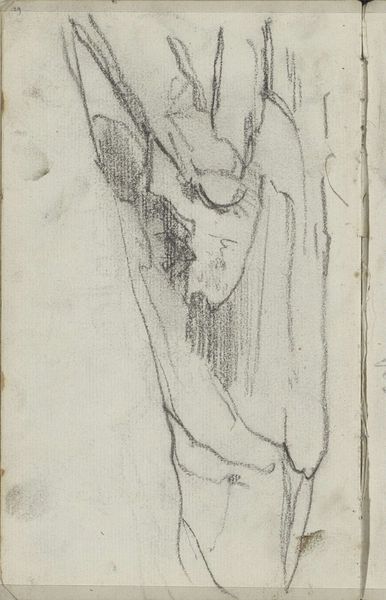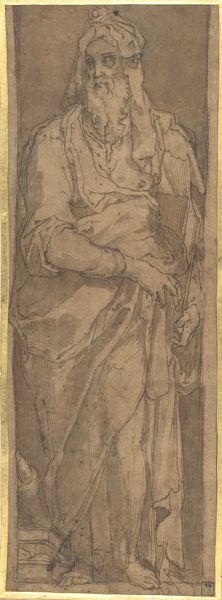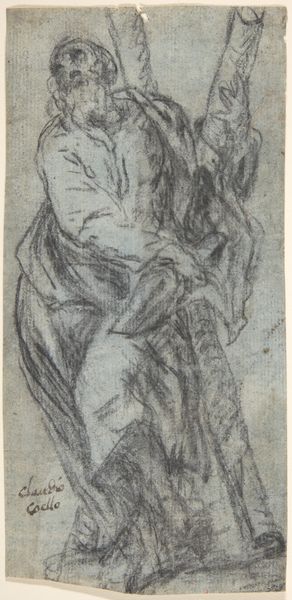
drawing, ink
#
drawing
#
mannerism
#
ink
#
nude
Dimensions: 234 mm (height) x 81 mm (width) (bladmaal)
Curator: Up next is "Youth with a Mantle Standing in a Niche," a work dating sometime between 1527 and 1585 attributed to Luca Cambiaso. It's currently held here at the SMK, drawn using ink. Editor: Immediately, what strikes me is its vulnerability. There’s something incredibly raw and immediate about the line work that brings this figure to life with almost brutal honesty. Curator: Absolutely, and that honesty might be precisely what Cambiaso was after. It is important to understand that drawings like this weren't necessarily seen as standalone works but were critical components of artistic training, explorations of form and, specifically here, an emphasis on classical models. The ink wash helps emphasize the form in the absence of color. Editor: And those classical models were deeply connected to power structures, wouldn't you agree? Showing the body, celebrating idealized male forms… it was about conveying ideals about beauty, strength, and status. Curator: Exactly. Think about how art academies codified drawing practices. Those institutional methods perpetuated a specific hierarchy, pushing this type of classically informed art above other kinds of material practices or vernacular forms. What seems to be only a simple nude drawing represents, actually, very codified techniques. Editor: I can see how someone deeply immersed in the traditions of craftsmanship and drawing like Cambiaso must have negotiated with all those codes in producing the figure. One wonders how much individual innovation he actually put into creating art within those well-established frameworks. Curator: He’s also clearly grappling with the visual language of Mannerism – there’s that elegance and deliberate artificiality in the pose, in how the drapery hangs, it all feels staged and curated. It reminds us that everything is carefully constructed. Editor: The niche itself seems less a structural element and more of an attempt to frame the figure, giving it that staged presence you pointed out. So much of this art plays with creating that relationship with the viewer, creating that illusion, through what are effectively just practiced strokes. Curator: It does offer much more when we start considering it in relation to artistic practice. So let’s move on to our next item in this collection. Editor: Yes, fascinating how process and historical forces become embedded within the materials. Thanks for unraveling that, it does cast a new light on it for me.
Comments
No comments
Be the first to comment and join the conversation on the ultimate creative platform.

